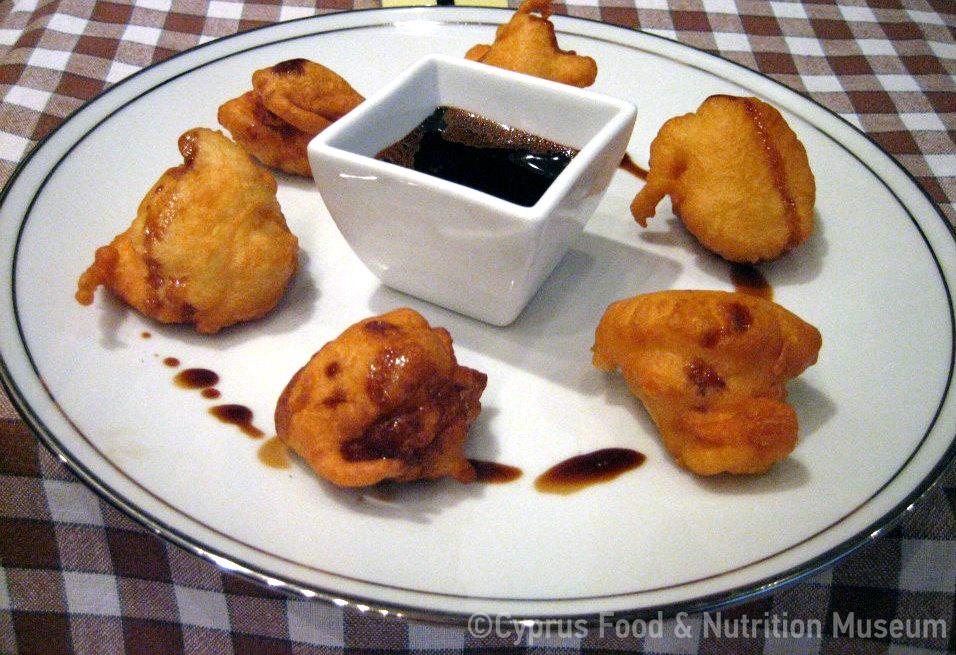A preparation that includes eggs.
Name - Origin
It is a preparation with beaten eggs, omelette, fried dessert (Yangoullis 2009, entry καϊκανάς - καϊκαράς,ο, 167). Eugenia Petrou-Poeitou points out that it is a sweet made with beaten eggs, flour and hot water. It is fried in oil and then poured over with epsima (Petrou-Poeitou 2013, entry Καϊκανάς, 48).
ETYM. < Turkish kaygana (persian xāygīna) (Yangoullis 2009, entry καϊκανάς - καϊκαράς, ο 167; Petrou-Poeitou 2013, entry Καϊκανάς, 48)
"Kaikanas was a preparation similar to lalangouthkia and gerouthkia" (Kypri - Protopapa 2003, 256-257).
A small argument is also called kaikanas (Yangoullis 2009, entry καϊκανάς - καϊκαράς, ο 167).
Xenophon P. Pharmakidis in his Glossary mentions that the eggs were beaten until the yolk and the white were well combined. Then they would add sugar, still beating the ingredients. The resulting mixture was then fried (Kypri 1983 [2003²], entry καηκανᾶς,ο, 66).
In the village of Tsakkistra, kaikanas was a sweet prepared with batter, salt and eggs. The mixture was inserted in hot oil, by hand or using a spoon. Using this method, puffed pies of various shapes were formed (Kyprianou 1970, 10).
In the villages of Pitsilia, kaikanas was a savoury preparation with halloumi, eggs, epsima and spearmint. After mixing all the ingredients, the dough was fried in hot oil (Ministry of Agriculture 2010, Cypriot traditional preparations, 10).
The inhabitants of Tsakkistra village used to consume kaikanan after sprinkling it with sugar or epsima (Kyprianou 1970, 10).
Hampis Christodoulou Nyssis (born in 1898 in Lemythou, Folklore Archive T. 566) states: "Kaikanas is prepared with epsima, figs and flour, which is beforehand fried with black oil. 'Kaikanas is not prepared on any special occasion' ( Ionas 2001, 103-106).
Additional information and bibliography
In order to prepare a platter of kaikanas, women in Tsakkistra village would use up to twelve eggs (Kyprianou 1970, 10).
Ionas I. (2001), Τα παραδοσιακά επαγγέλματα της Κύπρου, Publications of the Centre for Scientific Research, XXVII, Nicosia.
Kypri Th. D. (ed.) (1983 [2003²]), Materials for the compilation of a historical dictionary of the Cypriot dialect, Part B, Glossary of Xenophon P. Pharmakides, Publications of the Centre for Scientific Research, IX, Nicosia.
Kypri T. - Protopapa K. A. (2003), Παραδοσιακά ζυμώματα της Κύπρου. Η χρήση και η σημασία τους στην εθιμική ζωή (Traditional kneading of Cyprus. Their use and significance in customary life), Publications of the Centre for Scientific Research, XVIII, Nicosia.
Kyprianou Ch. St. (1970), Μερικές κυπριακές τροφές του χωριού Τσακκίστρα, Publications of Lapithos High School, Lapithos.
Petrou-Poeitou E. (2013), Where do they come from. Words and stories from the world of taste, Epiphaniou Publications, Nicosia.
Ministry of Agriculture, Natural Resources and Environment, Department of Agriculture (2010), Cypriot traditional preparations, Press and Information Office, Nicosia.
Stalo Lazarou, Demetra Dimitiou, Tonia Ioakim, Argyro Xenophontos
